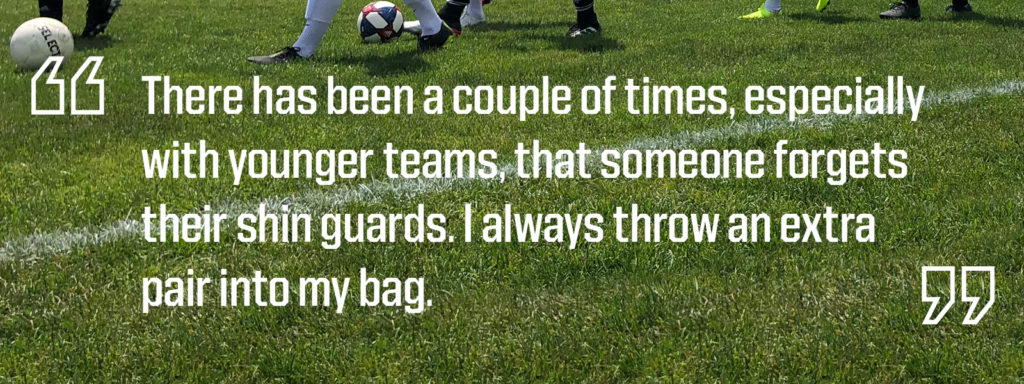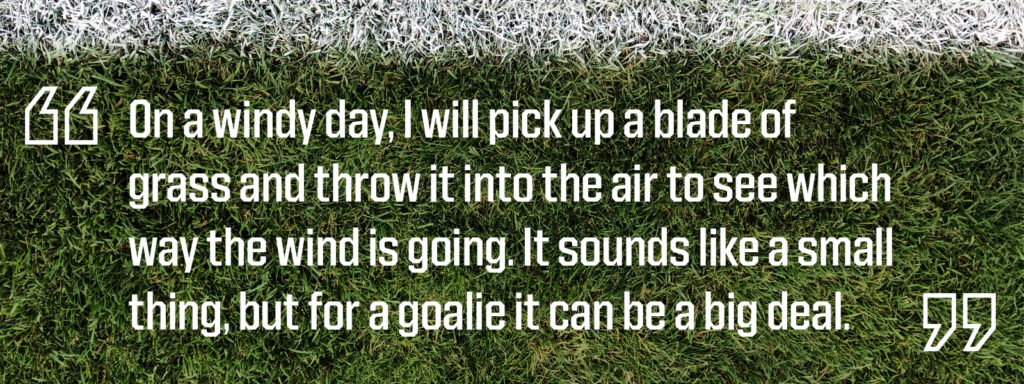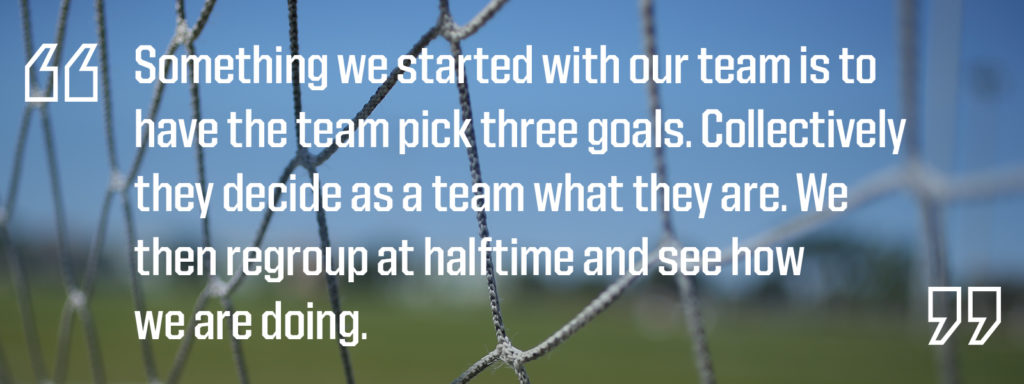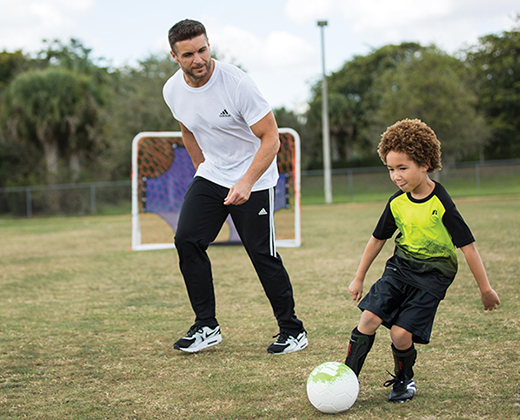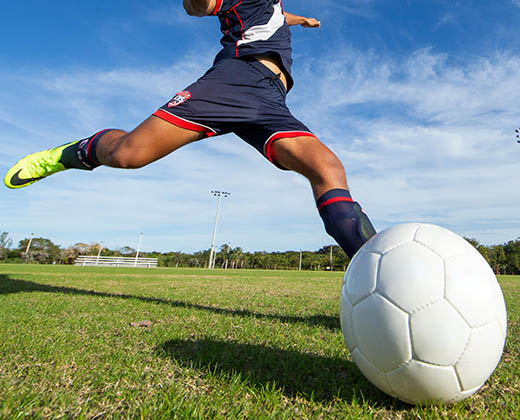Soccer Coaching Tips: Game-Day Prep
Make sure you're prepared to lead your team to victory during their next game with these Pro Tips.
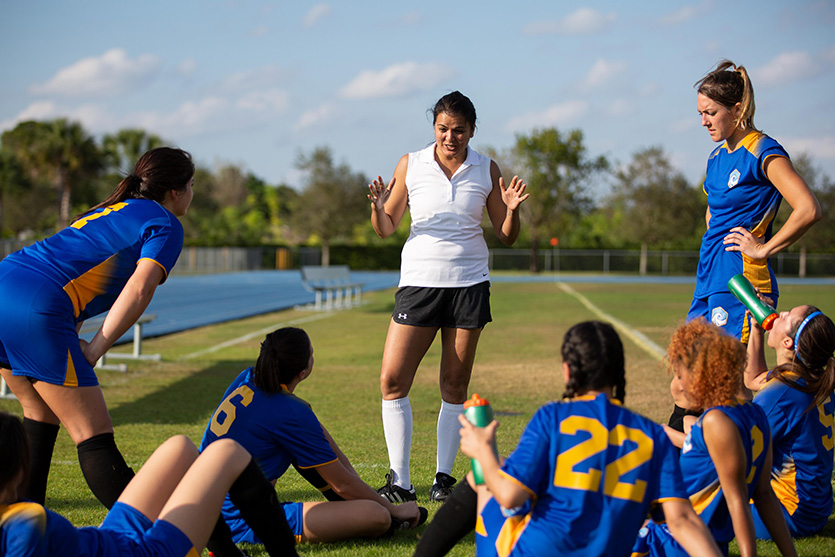
Hours of sweat, effort and dedication from your soccer team have led to this — game day.
As a coach, you’ve challenged your team in practice to hone their skills. But before you think about guiding your players to victory, you need to come to the field ready to go.
Being a coach is more than just X’s and O’s. By managing the buildup to a match, you can help make sure each game is a successful one.
BE PREPARED
The first step to a good day on the pitch is to come prepared — both mentally and physically.
STARTING LINEUP
First, have an idea of what your starting lineup is going to look like. It’s also vital to have your formations set with your players knowing what their responsibility is. You’ll have several practices before a game to decide which players can help the team reach its goals from the opening whistle.
“Some days it is a game-time decision, depending on injuries or if someone isn’t warming up well,” DICK’S Sporting Goods Associate and club coach Emily Linner says. “You will have those last-minute decisions. But you should go in with a general idea.”
Coaches of younger age groups might need to divide the larger group into multiple squads to play in separate games. You can break the roster up in several ways depending on your preference.
“We break it into an A and B group,” DICK’S Sporting Goods Associate and youth-level coach Mike McConnell says. “The other coaches and I will get together before a game starts and break the team up. Some coaches do this by having the perspective of age and experience, while other coaches have more of an in-depth process.”
COMMUNICATION
It’s also important to establish strong communication with both the players and their parents. The last thing you want is to show up to a game unaware that you’re going to be short players due to illness, vacation or other commitments.
“You want open communication with parents to understand who is going to be [there] and who isn’t going to be there,” McConnell says. “You also want to build relationships with the kids, so they can talk to you if they are not feeling well [or] if they are sick or hurt during a game.”
SOCCER GEAR
You’ll also want to come prepared with all the right gear. You may need cones or pinnies to run warm-up drills. A stopwatch can help keep warmups on track, and a white board can allow you to draw up plays at halftime.
Also, consider having extra shin guards with you.
“There has been a couple of times, especially with younger teams, that someone forgets their shin guards,” says Geoff Hatton, a DICK’S Sporting Goods Associate who has coached at the youth and club level. “I always throw an extra pair into my bag.”
Check out the Pro Tips Soccer Coach Checklist to make sure you have all the gear you need to compete.
PREGAME PROCESS
As a coach, you’ll want to arrive to the field before your team does. If your team is set to arrive a half hour before game time, try to get there at least 15 minutes before that.
This is a time when you and your staff can get together and discuss the plan for the day. This can include finalizing the roster, how to handle substitutions and strategies for the pitch.
WEATHER AND FIELD CONDITIONS
You may also want to walk the field to get a feel for the playing conditions. A natural field with grass could present a wide range of issues a coach might need to be aware of.
“A habit of mine is to get to know the field,” Linner says. “I check out the goalie boxes and if there is mud or divots in certain areas. I want to know if there is a slope one way or another. If you run in a certain direction for a while, you may be a little more tired.”
If it’s a morning game, check to see if the field is wet with dew. This can affect how well your players will be able to kick and handle the ball.
“They might need to shoot low so the ball skids,” Linner says. “That makes it harder for the goalie to stop.”
Be aware of the weather conditions, as well. If the game is set for the early morning or afternoon, know which way the sun is shining. You’ll want to have your goalkeeper prepared to face in that direction during the first or second half. Also, be aware of the direction of the wind.
“On a windy day, I will pick up a blade of grass and throw it into the air to see which way the wind is going,” Hatton says. “It sounds like a small thing, but for a goalie it can be a big deal.”
THE WARM-UP ROUTINE
It’s important to come prepared with a set group of drills to run before a game. This can help your players get primed and ready for the action. A set routine can have your players ready to roll when the whistle sounds.
Depending on the age and skill level of the players, a coach can set up a pre-game routine with more advanced drills. But it’s never a bad idea to start off with a focus on the fundamentals.
“We try to focus on small footwork and dribbling skills,” McConnell says. “There is a kind of quick pass, dribble up and take a shot drill. Or we might do a keep away drill almost like a 'monkey in the middle’ type of game.”
The Keep Away Drill is a staple of many warmups. The drill is set up with six to eight players positioned in a circle with a player or two inside the circle. The goal is for the players on the outside to pass the ball to each other while avoiding the interference of the players on the inside. Learn more about the Keep Away Drill with Pro Tips.
“If a player on the outside messes up, they will go in the middle and switch out,” Hatton says. “This gets the heart rate going while getting touches for all the players.”
You’ll also want to have drills specifically for the goalkeeper. One coach can work with the keeper during the rest of the team’s workout by rolling the ball to them and testing them with small shots.
You can end the warmup by having your entire team take shots on goal while the goalie tries to stop them.
“Every player, even defenders, like shooting,” Linner says. “It is a good way to mentally prepare for a game. That is something we end on that players typically enjoy.”
Check out this goalkeeper agility drill, which can help your keeper work on hand-eye coordination and movement.
Make sure your players get a water break after the warmup so they’re ready to go come game time.
PEP TALK
With just moments until the game begins, call your team in for some last-minute encouragement. Some coaches like to give a quick recap of what the team wants to focus on.
“Something we started with our team is to have the team pick three goals,” Linner says. “Collectively they decide as a team what they are. We then regroup at halftime and see how we are doing.”
If you’re coaching a group of younger players, the message of the pep talk might be different. In the developmental stages of soccer, the focus should be positive and about having fun.
For coaches of younger teams, choosing captains before the game can be a way to get kids excited for the match. You can do this by picking players who have a strong practice before a game.
“It is kind of cool to see the peer-to-peer work,” Hatton said. “You see kids step up and encourage their teammates on the field.”
Being prepared is a must for any coach. By managing everything that happens before a game, you can help your team be ready for a productive day on the pitch.


